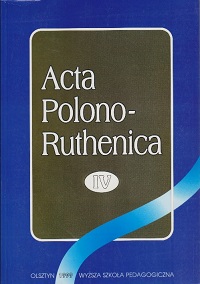
We kindly inform you that, as long as the subject affiliation of our 300.000+ articles is in progress, you might get unsufficient or no results on your third level or second level search. In this case, please broaden your search criteria.


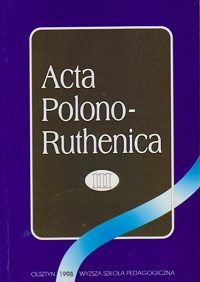







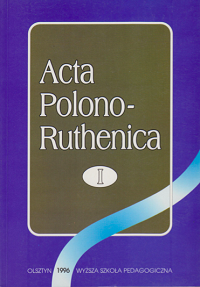


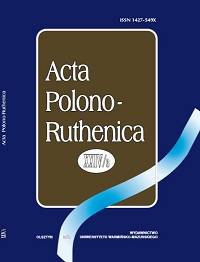
The paper presents an analysis of Polish equivalents of the Russian proper name Kolobok. Their diversity results from insufficient familiarity with the Russian source text (a folk fairy tale) in Poland, which is caused by little acquaintance with the hero of the story and lack of a Polish equivalent of such a fairy tale character that carries the same communicative value. Examples in-cluded in the paper do not always preserve the communicative value of the context: in few cases, it had been assessed which elements of the meaning are relevant and significant, and which are redundant, i.e. semantically irrelevant. Provisional equivalents in most cases are based on the inner semantics of the discussed proper name.
More...
The paper presents annex no. 1 to the Historical background of the Russian literatureby Nikolay Gretsch, translated and edited by Samuel Bogumił Linde (Warszawa, 1823). The annex, entitled About the story “The Igor’s Campaign” by Karamzin, is a translation of the excerpt from the History of the Russian state (chap. 7, vol. III), which was published in another work of Gretsch, the Scientific book of the Russian literature (vol. 1–4, Saint-Petersburg, 1819–1822). It concerns the masterpiece of the Old-Russian literature The Tale of Igor’s Campaign. The paper presents the place of Karamzin’s work in the structure of the Polish edition of the “Historical background of the Russian literature”. An interpretive context is Linde’s correspondence with Vasily Anasta-syevitch.
More...
This article brings the idea on the subject of a mythopoetic approach to the characters from Slavic mythology in translations of poems by Sergey Gorodetsky into Polish. This article focuses on the following works: Полюбовники (1906) – Miłośnicy (1971) and Предки (without a date) – Przodkowie (1971). The intent is to analyse the translations and to track to what extent the trans-lator reflected the specificity of the characters from lower mythology (Russian леший, черт) pre-sented in the original, and how much their image has changed in the translation. The analysis will also focus on the “inner form of the word” (Potiebnia) to show how specific translational actions influence the perception of the lyrical situation shown in the poems. Finally, the extent to which equilinearity and equirythmicality have been preserved in the above-mentioned examples will be examined (Kwiatkowski).
More...
The author of this article analyzes the play The Siege by Evgeny Grishkovets, a renowned contemporary Russian writer. She places it against a background of the rest of his works, exposing essential features that characterize his entire dramaturgy, such as the presence of metatheatrical devices, recognition of the importance of contact with the audience, and emphasis on stage performance. The analysis also draws attention to such elements of the play as non-homogeneous spatio-temoral framework, hybrid composition of characters, and parallel development of plot threads. Special attention is paid to the “imprisoning” of characters in discourses and the ambivalent nature of cultural symbols. As the author points out, the Siege stands out in the Grishkovets’s oeuvre, both by departing from the dominant monodrama form and by juxtaposing key themes recurring in his works: the human experience of war, the reflection on the nature of time, the collapse of language referential abilities, and the impossibility of authentic communication
More...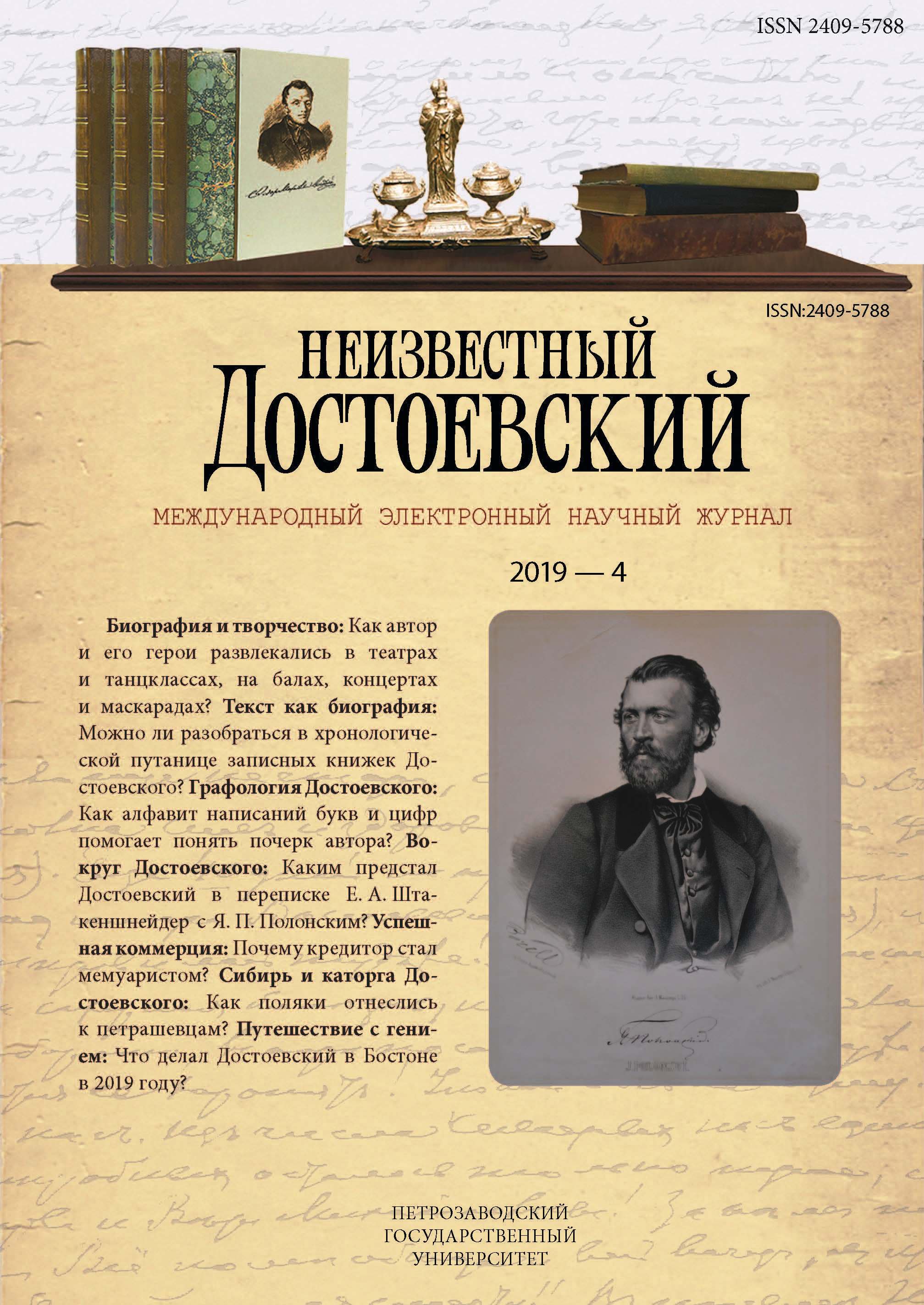
Elena Andreevna Stackenschneider (1836–1897), memoirist and hostess of the literary and art salon in St. Petersburg in the 1870s — early 1880s, was keeping records on F. M. Dostoevsky and his creative work for 25 years (1860–1885). She used to remark his public speeches, describe his appearance and habits, give a critical assessment of his writings, and tried to identify the features of his artistic world, never doubting the magnitude of his talent. The unpublished correspondence of Yakov Polonsky with Elena Stakenschneider, as well as previously unpublished fragments of the diaries of the latter, made it possible to clarify the facts of the biography of Fyodor Dostoevsky and to enrich the collection of vital criticisms and evidence of his activities and creative work. Thanks to her meticulous and longstanding work in accumulating materials and keeping memoirs, her deep analysis of Dostoevsky’s genius whose underlying message consists in Christian axiology, it is possible to consider this woman one of the first female researchers of the writer’s creation. The example of E. A. Stackenschneider evidentiates how despite the negative criticism grew up the number of sympathizers of her ideas who aspired to keep the image and heritage of their great compatriot for the descendants.
More...
The topic of financial relations of F. M. Dostoevsky with his numerous creditors has not been yet exposed to a comprehensive study. Neither the exact total amount of the writer’s debt, nor the amount of his debts to particular individuals or to what extent those were repaid by him, are known for certain. A detailed study of Dostoevsky’s heavy debt obligations in the mid-1860s as well as their weigh on the writer for almost all his life, may become promising for future researchers. This article presents the analysis of the letters of one of the writer’s creditors, a publisher and public figure L. F. Panteleev, as well as of his father-in-law V. N. Latkin, industrialist and researcher of the Russian North. These documents, dating back to the mid-1860s, make it possible to clarify some data on the numerous debt obligations of Dostoevsky at that time, to consider the relationship (both personal and financial) between two contemporaries — L. F. Panteleev and F. M. Dostoevsky, and also to make more clear the involvement of Latkin. Despite the fact that the communication between the publisher and the writer in the mid-1860s was not durable, the relationship between them can be described as completely trusting and friendly. The facts obtained from their letters to the writer, correlated with information from Dostoevsky’s extant account books and notebooks of that time as well as Panteleev’s memoirs, supplement the general picture of the financial situation of the writer in the mid-1860s.
More...
The review of the Travels from Dostoevsky’s Siberia. Encounters with Polish Literary Exiles by Elizabeth A. Blake (Boston 2019) is devoted to the description and analysis of the modern study of the destinies of the members of the Petrashevsky circle and the Polish exiles in Siberia. It is shown that extensive factual material has been introduced into scientific circulation and that Siberian life of F. M. Dostoevsky and the members of the Petrashevsky circle performs the function of historical and cultural background, on which the history of the Poles’ stay in Siberia is drawn.
More...